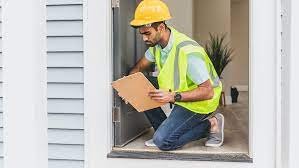Introduction
In the constantly evolving field of building inspections, professionals are continually seeking advanced techniques to enhance their ability to assess structures accurately and efficiently. These advancements not only improve the quality of inspections but also contribute significantly to building safety, compliance, and sustainability. This article delves into the innovative methods and technologies that are reshaping the landscape of professional building inspections.
Traditional vs Advanced Inspection Techniques
Traditionally, building inspections have relied heavily on visual assessments and manual testing methods. These approaches, while effective, have limitations in terms of accuracy, time efficiency, and the ability to detect hidden defects. Advanced techniques, however, leverage technology to overcome these challenges, offering more comprehensive, accurate, and less invasive inspections.
The Role of Technology in Modern Building Inspections
In recent years, technology has played a pivotal role in transforming building inspections. Advanced tools such as drones, thermal imaging cameras, and 3D laser scanning have revolutionized the way inspections are conducted.
Drone Inspections
Drones, or Unmanned Aerial Vehicles (UAVs), have become invaluable in inspecting hard-to-reach areas such as high-rise exteriors, roofs, and large structures. Equipped with high-resolution cameras and sometimes thermal imaging capabilities, drones provide detailed views of a building’s condition, allowing inspectors to identify issues such as structural damage, water leaks, and insulation problems.
Thermal Imaging
Thermal imaging cameras detect heat variations and are particularly useful in identifying problems that are not visible to the naked eye. They can reveal hidden issues like electrical faults, moisture intrusion, and inadequate insulation, making them an essential tool in energy efficiency audits and preventative maintenance.
3D Laser Scanning
3D laser scanning offers a non-intrusive way to capture the precise dimensions and details of a building. This technology creates detailed 3D models, allowing inspectors to conduct virtual inspections and identify potential issues without the need for physical access to all parts of the structure.
Enhancing Accuracy and Efficiency
Advanced inspection techniques not only provide more detailed information but also significantly reduce the time and labor involved in traditional methods. These technologies enable inspectors to cover larger areas in less time, with greater accuracy and less risk, especially in hazardous or difficult-to-access locations.
The Impact of Building Information Modeling (BIM)
Building Information Modeling (BIM) has emerged as a game-changer in the field of building inspections. BIM is a digital representation of a building’s physical and functional characteristics. It allows for a collaborative environment where various stakeholders can share information and updates throughout the building’s lifecycle.
BIM in Inspections
In inspections, BIM can be used to compare the actual conditions of a building against its original design, making it easier to identify deviations and defects. It also serves as a valuable tool for planning maintenance and renovations, as it provides a comprehensive view of the building’s history and current condition.
Integrating Data Analysis and Artificial Intelligence
The integration of data analysis and artificial intelligence (AI) in building inspections represents a significant leap forward. By analyzing large volumes of data from various sources, AI can predict potential issues before they become apparent, facilitating proactive maintenance and risk management.
Predictive Maintenance
Using AI algorithms, inspectors can predict when a component of a building might fail or require maintenance. This predictive approach is far more efficient than traditional reactive methods, as it allows for timely interventions, potentially saving time and resources.
Sustainability and Green Building Inspections
Sustainability has become a crucial aspect of building inspections. Advanced techniques are increasingly used to assess and improve a building’s environmental performance. Inspections now often include evaluations of energy efficiency, water usage, waste management, and the use of sustainable materials.
Green Certifications
Professional building inspections play a vital role in obtaining green certifications such as LEED or BREEAM. These certifications require rigorous assessments of a building’s environmental impact, and advanced inspection techniques provide the necessary data and insights to meet these standards.
Training and Professional Development
As the field of building inspections evolves, ongoing training and professional development become essential. Inspectors must stay abreast of the latest technologies and methodologies to provide the most effective and efficient service.
The Future of Building Inspections
Looking ahead, the field of building inspections is poised for further innovations. The integration of virtual reality (VR) and augmented reality (AR) in inspections, for instance, offers exciting possibilities. These technologies could enable remote inspections and more interactive training methods, further enhancing the capabilities of building inspectors.
Conclusion
The advancement of techniques in professional building inspections marks a significant stride in ensuring the safety, compliance, and sustainability of structures. By embracing these innovative methods and technologies, inspectors are better equipped to address the complex challenges of modern buildings, ultimately contributing to safer and more efficient built environments.



